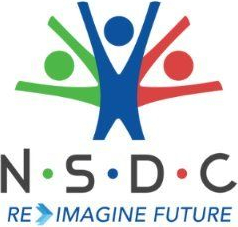Why Even a 90% Majority may not be as High as you Think

You see a 90% preference in a poll and assume a landslide. But what if the difference between choices is barely perceptible? This is a statistical illusion baked into our brains — and marketers and politicians, among others, exploit it to shape perception, sell certainty, and steer choices.
For decades, we have sub-consciously believed the straightforward outcome of most polls: the Accord is favored by 72%? Then the Accord must be much better than a Camry. One can imagine such a gap between preferences as often deciding a landslide winner. It almost appears to be a matter of common sense.
Yet, new research shows, in transcendently fascinating fashion, this intuitive step up to the higher consensus, namely a great deal worse (much worse than) product, candidate or idea than another available one, is a far more profound cognitive illusion – nothing more than a statistical sleight of hand.
The Misleading attractiveness of a Large Figure
If 72% of a survey group prefers Product A to Product B, it seems like an over-the-top preferred vehicle. Immediately, the muscles of our minds interpret this universal concurrence into a correspondingly immense dissimilarity of excellence or taste. What it presupposes is that, the more people like A, the more they like it better than B. The sinister thing about this is that it is not always the case. Indeed, research indicates that it is much more likely that the mean preference of A is only the slightest bit higher than B.
It is an every-day affair that cuts across practices and situations – beer choice or political voting, movie ratings to sport forecasts. Pollsters simply describe the opinion, the total decision. The problem is in the way our minds receive that consensus. Our mind is not set up to pick up intuitively the probabilities behind each outcome.
This is where the elegance of the solution reveals itself. Consider respondents rate two items on a very basic 1-10 scale. %age-wise, there may be a 90% chance of someone choosing item A, but the math behind how they aggregate often come to find the difference in liking may actually be rather small. Assuming we have two ratings between 1-10, how many combinations can they lead to a difference of, say 1 point? Ten ways (10-9, 9-8, 8-7 and so on). What about the ways of a difference of 9 points? There is only one (10-1). What can we conclude about this? Small differences in liking between comparable items are statistically far more likely than a bigger one.
This permutational logic would be true in almost all distributions of liking even when there are ratings on different scales or the preferences to the options would be correlated. Statistical measures, like the mode, distribution and difference of liking we most likely to obtain, is still extraordinarily small whether there is 90%, or even 60% agreement. Such a blind spot is confirmed by experiments: differences are overestimated by the participants, even analytically-trained students. The only thing they do is to invest more weight, so to speak, on the greater differences between categories.
When Overestimation Is Turned into Exploitation
This cognitive bias is not just an academic novelty; this is a mighty lever of influence.
Politicians, public policymakers, and marketers who are all alive to this human trait are in a position to, and do, directly portray preference information quite strategically. Consider Pepsi and their Pepsi Challenge: a plain percentage calculation was sometimes enough to sell a product better than an average evaluation of the taste may have. 70% agreement on Hotel A was sufficient in providing a drastically different choice-share than mentioning that Hotel A scored 87 out of 100 on average against Hotel B that scored 75 out of 100, although that 12-point average difference would objectively correspond to the 70% consensus. It was not the numbers that mattered, but the way they have been put into words.
This has effects much more far-reaching than soft drinks and hotel reservations. A similar conclusion was given in the case of sport fans who were supplied with the expert opinion regarding the Victor of a Super Bowl; they drastically overshot the missing point spread. In the example of politics, the vote shares we could have estimated, based on average ratings of whether people liked different parties, were much lower than the same scores estimated based only on the view of who people would vote for–there, once again, we see the other side of the same coin: subtle underestimation could be produced when the raw figures are not magnified by the consensus phenomenon.
The Age of Polls Calls for Skepticism
How then, are we to conclude things as far as the responsible manager, the concerned citizen, or even, the customer faced with a statistics-soaked world is concerned? The solution is to be skeptical enough towards information that seems to achieve consensus. The presence of a high percentage in a poll is a pointer towards popularity, definitely, but not of itself a decree of overwhelming superiority.
The continuous measures of liking, the averages of ratings, rather than the ordinal percentages of choice, should be stressed. We are, as it happens, flawed reasoners, and subject to such little tips towards the persistence of perception. The essential step to gaining more knowledge and wiser decisions from surveys is to be aware this bias exists.
Read: Graham Overton, Ioannis Evangelidis, Joachim Vosgerau, “People Believe If 90% Prefer A over B, A Must Be Much Better than B. Are They Wrong?”, Journal of Consumer Research, Volume 52, Issue 1, June 2025, Pages 135–156, DOI https://doi.org/10.1093/jcr/ucae055


